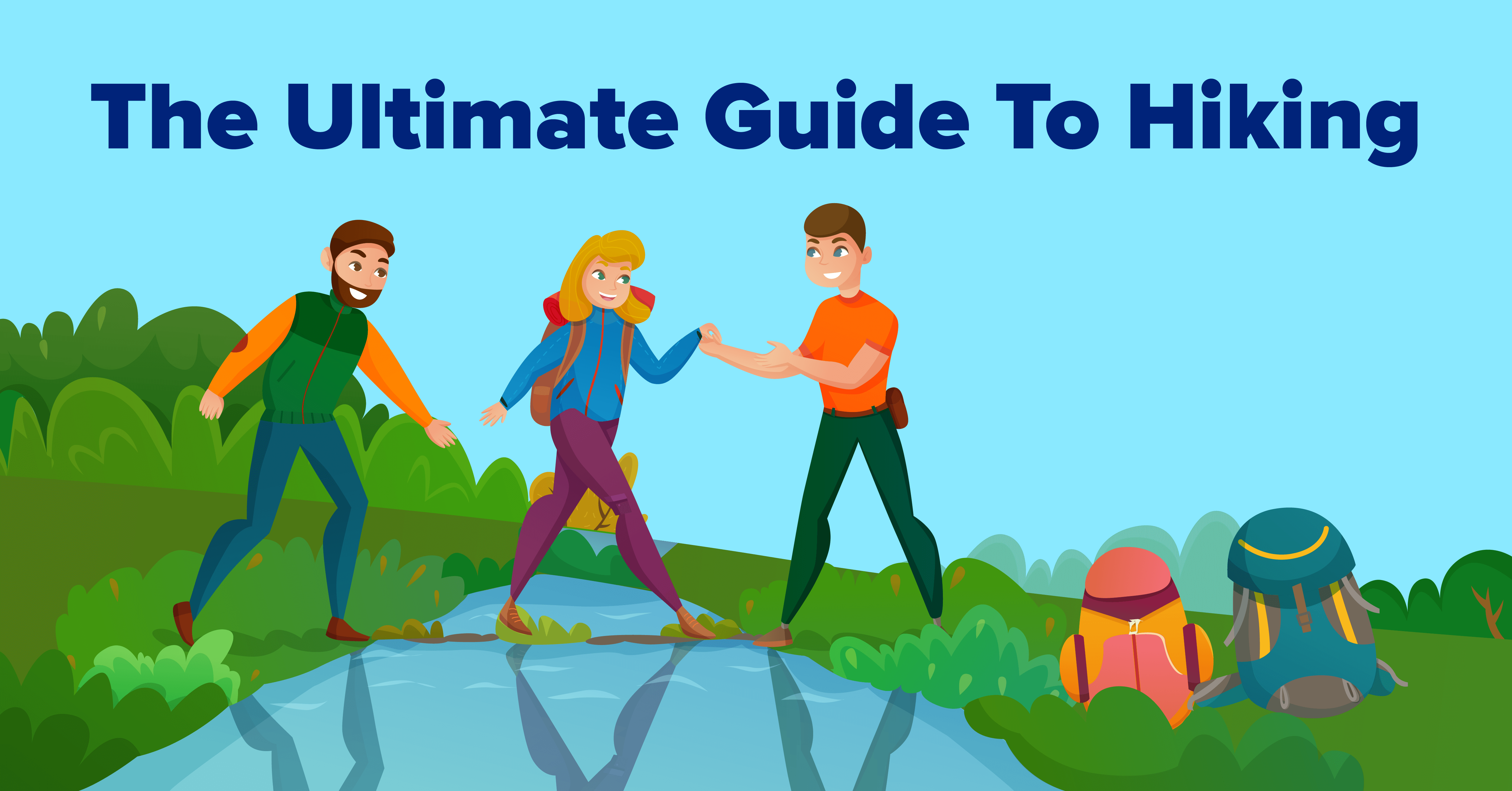Introduction

There are many wonderful ways to exercise out there. You can dance, do yoga, martial arts, pump iron at the gym and there’s so much more that you can do. One of the best ways to exercise though is hiking.
When you are hiking, not only are you getting those all important steps into your day, but you are also experiencing more of the world. You’re taking in the glorious sights that the world has to offer – sometimes in brand new places – and breathing in the glorious fresh air of a place that’s lacking the skyscrapers and smog of the city life.
It’s no wonder that so many people every year want to get into hiking – yourself included! Of course, there’s more to hiking than just a little bit of walking up a hill or on a trail.
It’s an excursion and a real experience, so if you want to get the best out of it then you are going to need to be prepared! With that in mind, we are here to help you to have the hiking experience of a lifetime.
Here’s your complete guide to hiking so you know exactly what to expect before those hiking boots even hit the ground.
Hiking For Beginners – The Basics
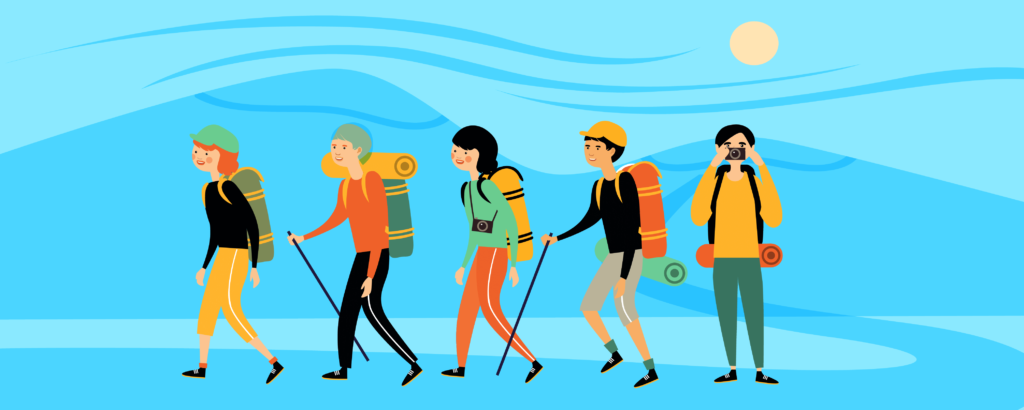
How about we start at the basics? Here are the fundamental things that you need to know about getting into hiking if you’re a total beginner.
Find A Partner
Rule number one of hiking when you’re a beginner: get a buddy to go with you. It doesn’t matter who it is – it could be your best pal, your dad or even your long lost aunt that lives near the Appalachian Trail. Just take someone.
Hiking alone can be an incredibly beneficial experience, but perhaps it’s not a good idea to do it when you’re first getting started. For one, hiking alone can be quite dangerous when you’re a beginner, since you may not know what to be prepared for.
Safety in numbers! In addition to that, it can get a little lonely and you may lose motivation if you are on your own. Bringing a buddy with you comes with a whole host of benefits, and it’s certainly something that we recommend.
Now, you may be in a situation that nobody – not even the said long lost aunt or your brother’s girlfriend’s sister’s dog – wants to go with you. It’s a bummer, but what can you do? If you can’t even go with a group, then you need to go alone.
If that’s the case, stay close by if it’s early on so you know where you’re going, and go to places that are popular. Make people aware of the fact that you are going, just to stay safe.
When you’ve got your buddy, the next thing to do is to get into some planning!
Plan Your First Trip
Being prepared is definitely a good idea when you are going hiking. This isn’t a form of exercise that’s like going to the gym, where you can just rock up and everything is there for you, including a handy water cooler.
No – when you’re hiking it’s just you, the fresh air and a couple of trails to follow. As such, you need to make sure that you are prepared in advance, equipped with some knowledge of the route and all the right gear that you are going to need.
So, mission number one of planning your hiking trip: figure out where you’re going to go. What hiking trails are out there that you both want to do, and are currently physically capable of doing?
You have to remember that if you’re a beginner, you may not quite be ready for more challenging trails yet so it’s safer to stick with the ones that you are currently ready to tackle. You’ll certainly thank yourself for it!
You can find trails by looking online or in guidebooks, since these will tell you all of the information that you will need to know about the trail. It’s also worth speaking to friends and family or people that live in the local area, since many of these people will also have hiking trail recommendations that you may want to try.
You may even find something unique that leads you off the beaten path.
Before you go on your trip, make sure that you consider a few things before choosing the trail. Namely, consider the amount of time that you have, how fit you are, how long the walk will be, how steep it is, the sort of weather you are going to be facing and if there are any logistical challenges that you may face and have to deal with on your way.
These are all things that can influence your hike, so it’s important to take heed of them.
Get The Gear
It’s also a good idea to make sure that you are going hiking with the right sort of gear with you. You don’t need to spend a fortune on the fanciest gear in the market – there are just a couple of essential items that you are going to need that will help you to make your hike a great one.
There are a few key items that you are going to need above all else. For starters, you’re going to need a good pair of hiking boots.
This is one of the most important items that you can have on your hike, since a good pair of hiking boots will ensure that you are comfortable and have a good grip on the trail, preventing injuries or burnout from feeling uncomfortable as you walk.
Think about the terrain that you are likely to be walking on when you are going to get hiking boots, since this can have a big impact on whether you need heavy or more lightweight shoes.
You will also need to consider the clothes that you wear – this certainly is not the time to go up a hill in heels and a skin tight dress. Dressing appropriately is vital when hiking.
Make sure that the stuff you wear dries quickly and wicks away any moisture- polyester and wool are good choices here.
You should have some insulated clothing with you if you are going to be hiking in cold weather, and it’s a good idea to make sure that you also have a waterproof jacket along for the ride with you, just in case you get caught in an unexpected downpour.
Finally, have a backpack with you! Look for something that can carry around 15 to 20 liters, since you are going to need things like snacks, additional clothing and water.
Plenty of space is essential. Since you are likely to be carrying a considerable amount of items, look for something durable too.
Types Of Hiking Trails
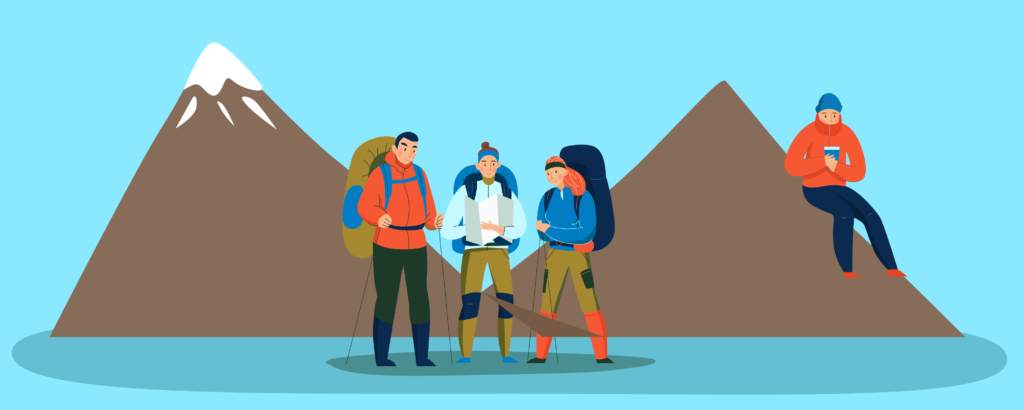
Now that you know a little bit about the absolute basics of hiking, what kinds of trails are out there? There are a lot of trails that you can try, but not all of them may be suitable for beginners.
As such, here’s everything that you need to know about the types of hiking trails that you may encounter when you are looking for the right option for you.
Foot Trails
When you think of hiking trails, what do you think about? It’s most probably a foot trail that you think about. These tend to be made up of pathways that the hiker can follow, and they tend to be safe for beginners.
You don’t tend to need a lot of gear for these trips – just pack your basics in your bag and put some hiking shoes on – you’re pretty much good to go once you’ve done this.
Of course, while foot trails tend to have a lot in common, they also aren’t all the same. They will all tend to vary in terms of the terrain, the distance and the incline.
Some of them are going to be more difficult to do than others will be. They will all lead you to different places too, for instance some will send you through the cities whereas with others you may be trying to climb to the top of a mountain.
Either way, they’re usually a solid choice for a beginner.
Bicycle Trails
You may not have been aware of this, but you don’t actually have to enjoy a hike on foot. Why not bring a pair of wheels, a bicycle helmet and the feeling of the wind rushing through your hair instead?
Bringing your bicycle on a hike can be super rewarding, and that’s what bicycle trails are for. These trails are designed to be suitable for biking, and some of them will allow both hikers and bikers on the same trail.
They will then tend to merge into particular paths for those that are just hiking on foot or using a bike.
Boardwalks
If you want to see more of the sights around you while you are hiking, it’s definitely worth hiking on the boardwalks.
In most cases, these paths are situated above water areas or places that are particularly marshy below, so there’s certainly a lot to look at when you are hiking in these locations.
The boardwalks are usually wooden pathways, and as such they can also be suitable for people that require wheelchair access. Of course, you will need to double check that the trail is definitely wheelchair accessible first.
These areas tend to have a lot of tourist visitors, so be prepared for them to be a little busy. For the sake of your own safety, it’s best not to venture off the beaten path when you are hiking on boardwalks, for the sake of your own safety.
Nature Trails
There’s nothing like hiking on a nature trail. On these trails you get the opportunity to enjoy the world around you, seeing all sorts of plants and animals as you walk.
Many of the trails will often have places along the way where you can learn more about the things that you are seeing on the trail. They are usually suitable for wheelchair users. This kind of hiking is a great choice if you like to learn as you are getting your steps in.
Wilderness Hiking – No Trails
The great thing about hiking is that for the most part, you don’t always have to stick to the beaten path. In fact, it can be very rewarding to tackle a hiking trip that doesn’t actually have a trail.
This offers a lot of freedom, and you may like to take a tent with you so that you can camp when you are hiking. It’s a good idea to check that it’s legal for you to hike in the location in question though, since you don’t want to be trespassing!
The Ultimate Hiking Supplies – Everything You Need In Your Backpack
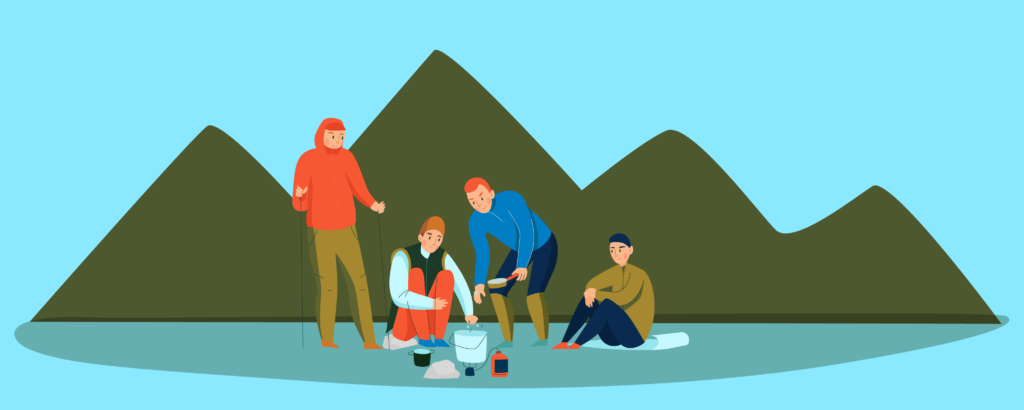
It’s time to get packing for the trip of a lifetime. But wait – what do you need when you are going hiking? What are those all important items that you simply must have in your backpack? Here’s what you have to know before you head out.
Nutrition
Hiking requires a lot of energy, and in some cases you’re going to be out for a long time – potentially hours or days. For that reason, it’s really important to ensure that you have the right nutrition when you are on a hiking trip.
You don’t need to have a 3 course meal when you are going on your hiking trip either. There are plenty of quick snacks that you can bring with you that won’t take up a lot of space in your back but will also pack enough of a punch to keep you going on your trip.
The best thing to do is to ensure that you are bringing snacks that you can digest fairly easily, and ones that can give you energy over a prolonged period of time.
For this reason, it’s a good idea to check out the nutritional information on the snacks in question to make sure that they will be suitable.
You’ll have a few different options available too – bars, bites, gels and chews, and there are also drinks that you can have such as sport drinks.
Make sure that you are eating before, during and after the hike, but eat the right things for the job. This will allow you to feel your best throughout the entire day.
If you are going to be traveling with extra people too, make sure that you bring some spare snacks. Other people may forget or may not bring enough, so it’s important that everyone is well nourished and nobody is left behind.
Hydration
Food isn’t the only important thing when you are hitting the trails. In fact, it’s arguably more important to ensure that you have plenty of fluids to keep you hydrated.
In most cases your fluid requirements are going to vary depending on things based on your age, weight and more.
For the most part though, if you are doing an hour of hiking then you will need at least half a liter of water to keep you hydrated – this will increase based on the amount of activity that you are doing.
If it’s hotter then more liquids will be required.
It’s a good idea to bring enough water to last for the entire hiking trip. You’re not likely to find a 7/11 on your hiking trail, after all!
Bring plenty of water from the offset and drink regularly to keep you going. You can also think about bringing drinks that are full of electrolytes in order to keep you energized while you are hiking.
First Aid Kit
Getting injured is a very real possibility when you are hiking, regardless of how careful you are. Someone could always take a slip and fall over, and they could end up getting hurt in the process.
For that reason, it’s a good idea to ensure that you have a first aid kit in your bag ready for your trip. You can usually look online and find first aid kits that have already been assembled ready for your trip which will save you buying individual pieces.
If you would prefer to build your own first aid kit though, it’s also possible to do so. You just need to get the right items for the job.
Toilet Roll
It’s always a good idea to bring toilet paper with you on a hiking trip – you never know when you’re going to need it! Toilet paper is absorbent so it can be used for a lot of different things, not just for cleaning after using the bathroom.
You may think that you can just rely on the toilet paper in public bathrooms while you are on your trip, but it’s an error to think this way since public toilets don’t always have all of the things that you need.
It’s better to be prepared and not need it than to be in need and not have the right gear.
Extra Layers
A weather forecast can only be so accurate on any given day. Sure, forecasts can be made and some of them can be correct, but there’s always the chance for an unexpected change in the weather.
Unfortunately humanity has not advanced to a stage yet where it can control the weather. As such, it’s best to be prepared.
Make sure that you bring some extra layers along with you when you are hiking, since this will help to keep you warm if it ends up getting cold.
Prepare for the rain by bringing a foldable rain poncho along with you in your bag too. If you are prepared then you are less likely to be caught off guard.
In many cases, the curve of the hiking trail will help you to have a good indication of exactly where you are going. With that being said though, it’s always a good idea to bring some navigation tools with you in order to help you to know where you are going.
Look for things like a GPS, a map and a compass to put in your bag so that you are always aware of where you are.
This will help you to avoid getting lost too! Check the map before you leave too so you have some idea of what you can expect.
Multi-Purpose Tool Or Knife
This is another item that will go hand in hand with your first aid kit. You may need a portable knife in order to cut things like bandages or even to open food pouches in some situations.
If you have one on hand then you can be prepared for any situation. They’re also pretty useful if there’s a need to set up a fire while you are hiking.
Sun Protection
Nobody likes having a sunburn, especially when they are hiking. For this reason, it’s worthwhile to have some sun protection on hand when you are hiking.
Bring some sunglasses and some sunblock that you can put on your skin – something SPF 15 or more will be adequate. You should be applying sunscreen every two hours when you are hiking, though more applications may be needed if you are sweating excessively.
Trash Bag
Do you know what’s trash? Littering. People go on hiking trails to enjoy nature, not to stare at empty chip packets and trail mix strewn all over the place.
Be considerate to your fellow humans and to the environment and bring a trash bag. Put your garbage in the bag and you’re good to go. There’s no need to make a mess of the world around you.
Bug Spray
It’s pretty irritating to have to deal with insects when you are on a hiking trip, but it’s just an unfortunate part of the excursion.
You can avoid being too annoyed by these flying pests by bringing some bug spray with you, and reapply it often. For children you can use a citronella spray instead.
Toiletries
Hygiene is important even when you’re trekking through the wilderness!
If you are going off the beaten track and there aren’t going to be any facilities nearby, make sure that you have all the toiletries you need with you, such as bags for waste, hand wash and toilet paper.
Safety Items
Safety should always come first when you are hiking! As such, bring some safety items with you. You never know when you may need to set up a fire, so bring a firestarter with you and learn how to use it before you leave for your trip.
It’s also a good idea to bring a flashlight so that you can see well in the darkness, and also bring a whistle so you can alert others to your presence.
Hiking Tips
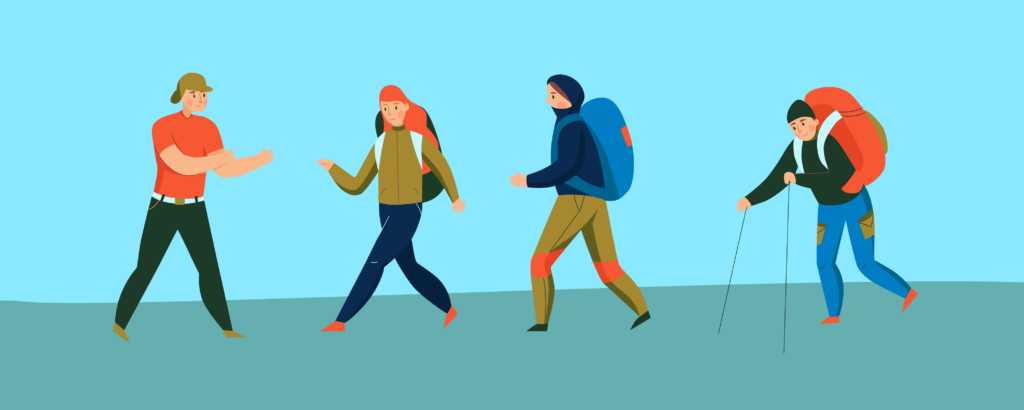
Now you know all about what stuff to bring on your trip and where to go. So, what else do you need to know? Well, here are a couple of tips that you should be aware of before you venture out into the wilderness on your big hiking trip!
Communicate With A Friend Or Family Member About Your Hike
There’s a chance that you may be going on your hiking trip with friends and family members, both to keep you company and to keep you safe. If that’s the case, that’s great!
It is still important to make sure that people back home know about your hike and where you are going. It’s especially important to do this if you are going to be hiking alone.
Let your loved ones know where you are going and a rough estimate of how long it takes. It’s often difficult to get phone signals when you are on a hike, so it will be hard to get in touch with them if you are in trouble.
If anything does happen to you when you are on your hike, such as if you go missing or you’re hurt and can’t move, then your family will know where to find you so you can get help.
It’s never fun to think in that way, but it’s definitely necessary to do so. It will help to keep you safe on the trails.
Only Take What Is Essential
It’s tempting to pack absolutely everything you can think of, as if you were catering for a small army. It’s always good to be prepared, but when it comes to hiking there’s also such a thing as being overprepared.
This may not seem like an issue, but when you are carrying all of your gear in your backpack you’ll change your mind about that viewpoint pretty quickly.
Bringing too much gear can get uncomfortable really quickly, so it’s best to only bring with you what is absolutely necessary. Make sure that you pack the items that we have listed above since they will be necessary for having a good trip.
You don’t want to be struggling to carry your backpack, after all.
Hike With A Companion
You may want to go hiking alone – we get it, it can be incredibly rewarding to hike on your own. You don’t need to answer to anyone else, and it is pretty peaceful too.
With that being said, it’s definitely in your best interest as a beginner to bring someone with you. This is the best thing that you can do for your own safety.
Another person can have your back in case you get hurt, and you can help each other with navigation. A little help can go a long way when it comes to hiking for the first time.
If you don’t have any friends or family members that want to come with you then you can always join a hiking group. It’s better to have safety in numbers when you are a beginner at hiking.
When you get a little more used to hiking then you can start to take trips on your own.
Take Your Cell Phone
Yes, getting cell service can sometimes be a challenge when you are out on the hiking trails. It’s also true that bringing technology with you can be a bit of a downer when you are trying to enjoy the great outdoors.
With that being said though, your phone isn’t just important for taking landscape shots with your built in camera. It’s not just for updating your social media status when you reach the top of a mountain.
Your cell phone is a powerful asset for your safety. We all like to think that an emergency situation won’t happen, but there’s never a guarantee that things will be plain sailing.
If you have your phone with you then it will allow you to call for help if you are stuck in an emergency.
Many phones will have SOS alerts too that will help emergency responders to work out where you are, which is especially handy if you don’t have any phone signal.
Make sure that your phone is fully charged before you leave.
Always Stay On Your Planned Trail
It may be tempting to take an alternate route when you are on your hiking trip, especially if the other route looks really interesting. With that being said though it’s a good idea to stick to the trail that you originally planned to take.
If you took heed of the information listed in this article, then you will know the value of being prepared. You may have even familiarized yourself with the route before you even left the house.
That is not likely to be the case if you take a different trail. That’s not the only thing either. Remember when we mentioned earlier about letting your loved ones know where you are?
Well, if you take a different route then they aren’t going to know where you are headed to, which can make it harder for you to be found. Stick to your chosen route and make a mental note of the alternate route for your next trip.
Summary
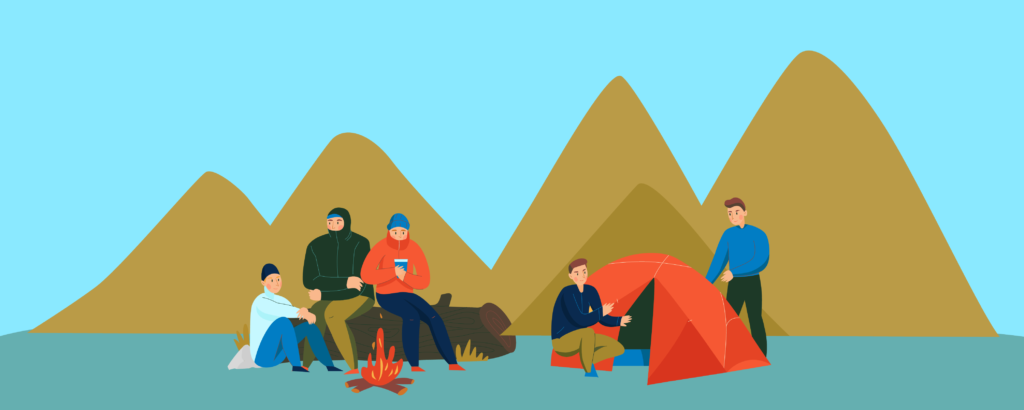
Now you’re ready for your hiking trip! Remember, be prepared and have fun. Happy hiking!

